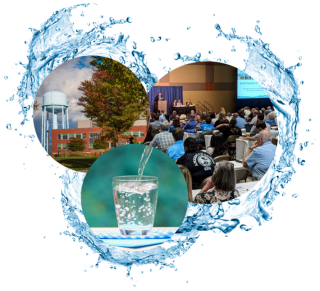20th Annual EPA Drinking Water Workshop: Session 5A

Disinfection and Disinfection Byproducts
Track A: Distribution Systems and Water Quality
Presentation summaries and speaker and moderator biographies for Session 5A of the 20th Annual EPA Drinking Water Workshop.
September 13, 2023 from 8:30 to 10:15 a.m. ET
See the full workshop agenda for all sessions.
Moderator:
Jonathan Pressman, Ph.D., P.E. | EPA Office of Research and Development
Mike is an environmental engineer with EPA's Office of Groundwater and Drinking Water, Targeted Community and Compliance Assistance Branch. He is currently working with states and public water systems on the implementation of the Surface Water Treatment Rules, the Disinfection Byproducts Rules, the Groundwater Rule, and the Lead and Copper Rule, as well as microbial and other contaminant treatment issues, alternative treatment technologies, and potable water reuse. Mike has 30 years of experience in public water supplies and drinking water treatment and serves as a national subject matter expert in the areas of disinfection and microbial treatment of drinking water. He is a licensed professional engineer in California and Maryland and a certified water treatment operator.
Delving Deeper into Chloramine Decomposition to Understand NDMA Formation
Summary coming soon.
Julian Fairey, Ph.D. | University of Arkansas
Julian is an associate professor of engineering and civil engineering with the University of Arkansas. He is primarily an experimentalist and works on applied research projects developing novel technologies to reduce the risks posed by pollutants in sediments and drinking waters. Julian holds a Ph.D. and an M.S. from The University of Texas at Austin and a B.S. from the University of Alberta.
Pennsylvania’s Distribution System Evaluation Tools and Findings
A review of Pennsylvania’s Distribution System Evaluation (DSE) program, tools used, and interesting findings. Utilizing special studies and tools developed in partnership with U.S. EPA’s Technical support branch, Pennsylvania has developed a program to assist water systems that have high disinfection byproduct or low chlorine residual issues or that have a general interest in improving distribution system water quality. This presentation will discuss hold studies, hydrant sampling utilizing the calculated flush time method, the value of in plant water quality sampling, storage tank mixing and turnover software (EPA), and portable chlorine residual monitors (Hach Cl-17s). Several case studies that highlight some of the most common issues found during DSEs will also be discussed.
Stephanie Stoner, B.S. | Pennsylvania Department of Environmental Protection
Stephanie has worked for the Pennsylvania Department of Environmental Protection for over 30 years, spending most of that time in the Safe Drinking Water program, including more than 20 years focused on optimizing filter plant operations and water quality. In 2019, she expanded her focus from filter plant optimization to conducting distribution system evaluations with water systems across the state. She assists water systems in identifying and solving water quality problems, advancing their understanding of optimization, and enjoys sharing that information with others―whether it is several operators during a site visit or training classes for a wider audience. Stephanie holds a B.S. in biology from Gettysburg College and is a certified operator through the Pennsylvania drinking water operator certification program.
Revised Disinfection Byproducts Rule
This presentation will cover the updates made to Ohio’s Administrative Code (OAC) Rule 3745-81-24(C), which covers disinfection byproduct (DBP) monitoring requirements. The rule updates became effective on January 1, 2021 and were updated to include an additional requirement for master meter DBP monitoring for consecutive and wholesale public water systems, if specific triggers are met. The purpose of this rule is to promote joint accountability and effort between wholesalers and their consecutive systems that are experiencing DBP exceedances. Ohio EPA is hoping to reduce the occurrence of consecutive systems receiving water with DBP levels over the MCL and remove additional barriers of regionalization as well.
Hayley Zimmerman, B.S. | Ohio Environmental Protection Agency
Hayley is an environmental specialist with Ohio EPA’s Division of Drinking and Ground Waters, Central Office located in Columbus, Ohio. She is the program coordinator for the disinfection byproduct and volatile organic compound programs and assists with consumer confidence report reviews. She interned at the Ohio EPA Division of Environmental Services Laboratory where she assisted with various testing methods for drinking and surface water samples. Hayley holds a B.S. in toxicology, biology, and chemistry from Ashland University. While at the university, she engaged in a research project to find a rapid, cost-effective, and reliable method to measure the quantity of hydrophobic pesticides found in soil and sediment.
Disclaimer: The views expressed in these presentations are those of the authors and do not necessarily represent the views or policies of the U.S. Environmental Protection Agency. Any mention of trade names or commercial products does not constitute EPA endorsement or recommendation for use.
